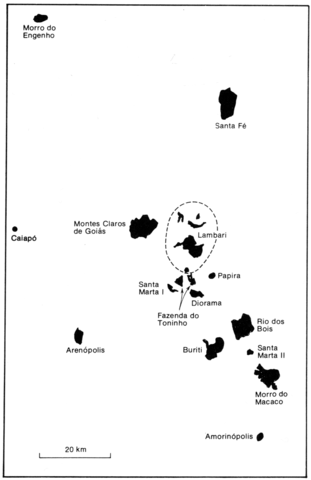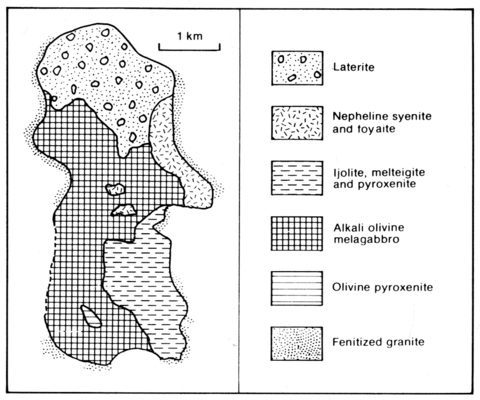stripes
Arenopolis is an elongate intrusion of 6x2 km emplaced in Precambrian granites and Devonian Furnas sandstone. The earliest rocks are olivine pyroxenites with secondary amphibole and biotite, which are surrounded by olivine alkali melagabbros consisting of olivine (Fo86-70), Ti-augite, plagioclase (An58-41) and interstitial albite, orthoclase, nepheline and secondary analcime and zeolite. An area of melteigites includes patches of ijolite and pyroxenite, while the northeastern part of the intrusion consists of nepheline syenites comprising orthoclase, nepheline and aegirine with a little biotite and cancrinite after nepheline. Within the syenites numerous microsyenite and microfoyaite dykes occur containing baddeleyite and eudialyte and these, together with lamprophyre and nephelinite dykes, are also found in the country rocks.
DANNI, J.C.M., FUCK, R.A. and LEONARDOS, O.H. 1976. Geologia e petrografia da intrusao ultramafica alcalina de Arenopolis, Go. Anais Congresso Brasileira de Geologia, 29: 265-71


